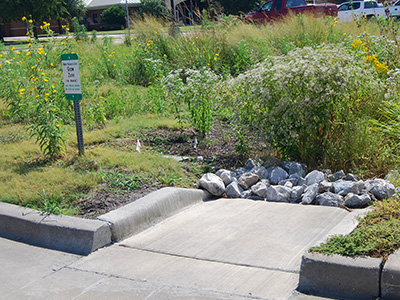What is iSWM?
iSWM stands for integrated Stormwater Management. iSWM is a regional program administered by the North Central Texas Council of Governments (NCTCOG), which brings together representatives from your cities, counties, and special districts to find collaborative solutions to regional environmental challenges. iSWM is a tool that helps our local governments meet or exceed state and federal requirements for stormwater management.
What is Stormwater Management?
 Let's start with the basics: what is stormwater? Simply put, stormwater is precipitation that falls to the ground as rain, or the meltwater from snow and ice. Once water hits the ground, it can do a few different things. It can infiltrate the soil; it can pool and eventually evaporate; or it can travel downhill as runoff.
Let's start with the basics: what is stormwater? Simply put, stormwater is precipitation that falls to the ground as rain, or the meltwater from snow and ice. Once water hits the ground, it can do a few different things. It can infiltrate the soil; it can pool and eventually evaporate; or it can travel downhill as runoff.
Runoff can be problematic because water picks up pollutants – road debris, motor vehicle oil, gasoline, lawn amendments, sediment, etc. – as it flows over land surfaces. The water then either flows to a water body or enters a storm drain that discharges directly into a water body. Water that enters the storm drain system is NOT cleaned before discharging to creeks and rivers. Pooled water can cause traffic hazards and provide breeding grounds bacteria and disease-carrying pests. Infiltration is generally the most preferable course, because plants and soil filter out pollutants and because infiltration helps replenish groundwater resources.
Stormwater management consists of all the strategies and structures we use control these different flows and mitigate any harmful effects.
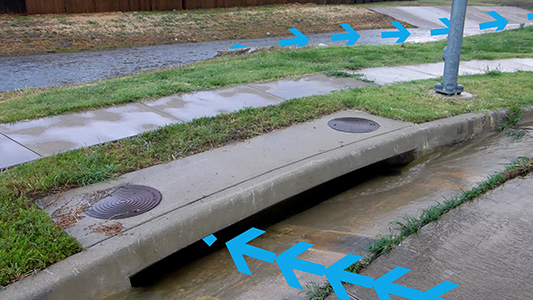
How does iSWM help?
As you have probably noticed, North Central Texas is a rapidly urbanizing region. This kind of development results in increased impervious surfaces, such as concrete and asphalt, which accelerate runoff and prevent infiltration. This creates serious challenges for stormwater managers.
A few stormwater management issues that our local governments face are:
- Increasing runoff volume, which can cause erosion and flooding;
- Water quality problems arising from chemicals in lawns, streets, and buildings that are picked up by runoff and carried to local streams;
- Loss of natural features – such as forested areas and wetlands – that reduce runoff volume and improve water quality; and
- Lack of regional consistency, which results in an ineffective patchwork of regulations with varying levels of efficacy.
iSWM is designed to help communities face these issues head-on in a comprehensive, regionally consistent manner. By adopting iSWM, cities commit to codifying best practice regulations that reduce volume and decelerate runoff, improve water quality, and encourage the use of holistic site designs that integrate both green (natural) infrastructure and gray (concrete) infrastructure.
What does this mean for me?
Effective stormwater controls provide a variety of benefits for communities and their citizens:
- Protecting public safety in your community by reducing flood impacts and minimizing the danger that comes with high volume runoff in your roadways;
- Protecting property values by preventing excessive runoff that could damage homes, erode streambanks, and damage public and private infrastructure. Some iSWM-recommended stormwater controls even enhance property values through aesthetically pleasing design; and
- Improving water quality, which makes our waterways safer for recreation and lowers the cost of municipal water treatment.
In short, if you've seen the iSWM sign in your community, this means your city is going above and beyond to serve you and the environment.
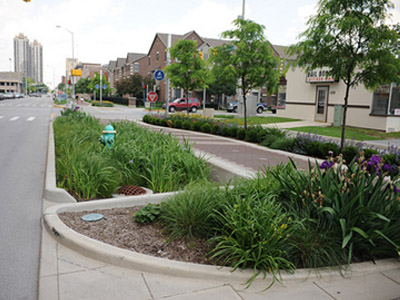
What are the key principles?
Natural Areas and streams are highlighted tastefully within a development. But these features do more than look good, they treat stormwater runoff from streets and parking lots.
By creating systems that mimic the natural environment, development can coexist within a space in a way that is visually pleasing and does not increase runoff.
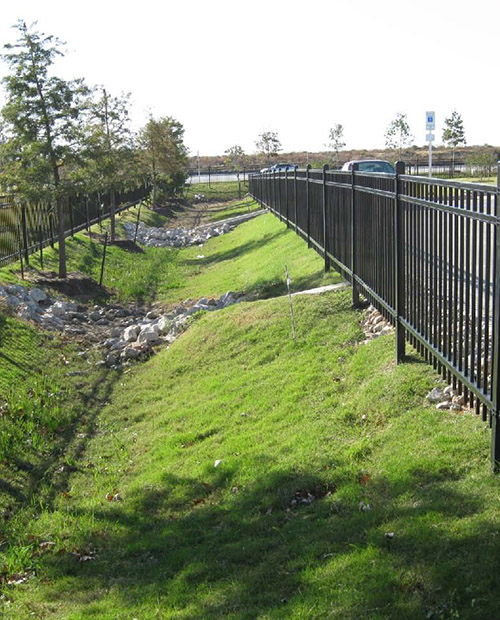
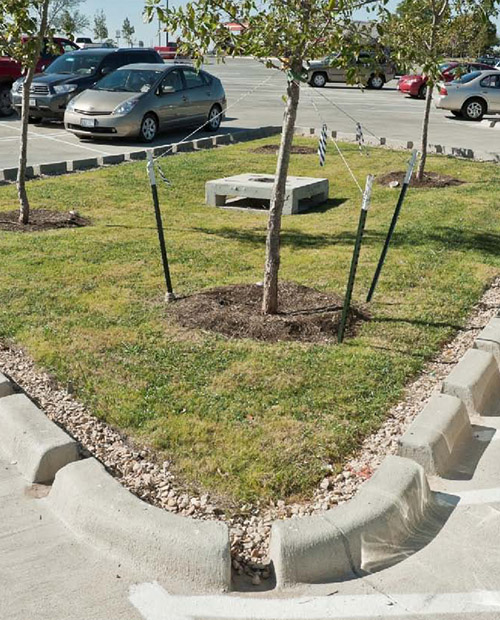
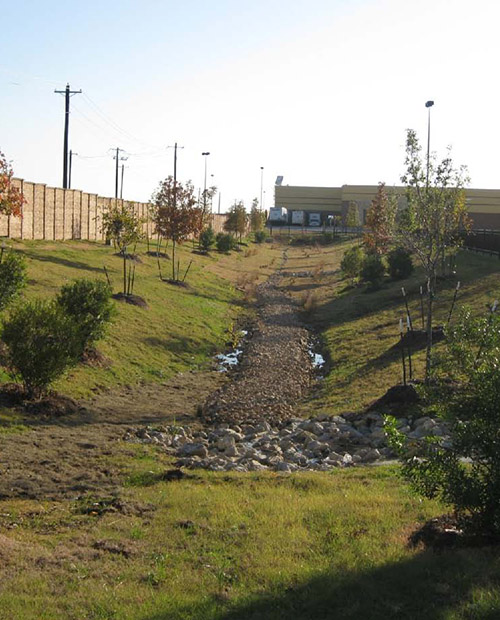
Get Updates About iSWM
Enter your email address below to be placed on the interested parties list. We will send out periodic emails regarding training opportunities and news regarding the Integrated Stormwater Management program.


